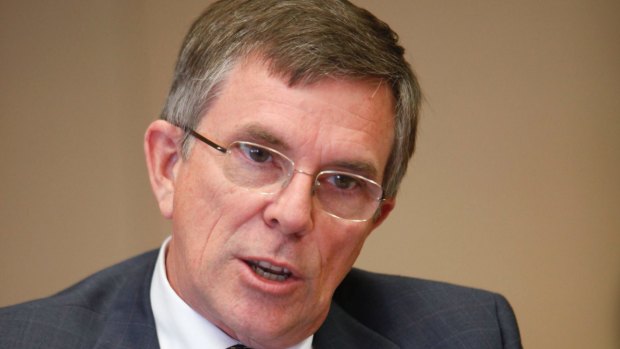This was published 7 years ago
Youth detention review reveals 'sobering' statistics
By Felicity Caldwell
Queensland's youth detention centres could struggle to cope with an influx of 17-year-old offenders, the LNP state opposition has claimed in the wake of "sobering" detention figures being released.
The government will move 17-year-olds out of adult facilities and into youth justice, with the new legislation beginning in November 2017.

There are concerns about whether Queensland's youth detention centres can cope with an influx of 17-year-olds from adult prisons.
But predictions of how many extra beds will be needed in the state's two youth detention centres have been described as "sobering" - and that is before taking into account introducing 17-year-olds.
The Independent Review of Youth Detention Report was initially heavily redacted, before Attorney-General Yvette D'Ath ordered a review, which led to be it being released again with 159 extra pages.

The Labor government announced changes to youth detention in Queensland last year.Credit: Cameron Atfield
It revealed allegations of youths being hog-tied, isolated up to 23 hours a day and subjected to barking, straining dogs.
The original version of the report had a headline "Capacity Concerns" followed by a blanked out section and then the words: "That is a sobering statistical prediction".
The un-redacted report reveals what lies beneath the black box.
The reviewers said capacity at detention centres had been highlighted as a concern in internal Youth Justice communications in recent years.

Shadow Attorney-General Ian Walker says the government's plan on how it will transition 17-year-olds into youth detention is still not clear.Credit: Glenn Hunt
The 2013-2023 Department of Justice and Attorney-General draft Youth Detention Demand Management Strategy referred to the Brisbane and Cleveland youth detention centres as operating "almost permanently over accepted safe capacity", that being 85 per cent of a centre's built capacity.
In an internal briefing by Youth Justice in 2015, it was noted that even without the inclusion of 17-year-olds from adult to juvenile facilities, "there was a forecast need for an additional 20 beds by 2020 and for 50 beds every seven years after that".
"That is a sobering statistical prediction," the report reads.
The Brisbane centre has 116 beds, while the Cleveland centre in Townsville has 96 beds.
The Cleveland centre doubled its size from 48 to 96 beds in early 2014.
As at June 29, there were 49 17-year-old prisoners in adult correctional facilities.
Figures from the 2016 Youth Justice Census confirmed 16-year-olds represented the largest cohort of young people on detention, and while some 17-year-olds would complete their sentence, there would be a "large cohort" of 16-year-olds that would be included in future Youth Justice operations.
But the review also states the actual numbers of 17-year-old young people being transferred are "likely to be low" and remand reduction strategies may reduce the pool of potential 17-year-old transferees.
The 2017-18 budget included $199.6 million over four years to transition 17-year-olds from Queensland's adult justice system into the youth justice system.
The government's plan also includes reforms, such as diverting young people from the criminal justice system to alternative programs that reduce offending and reduce the numbers of young people in custody - and therefore reduce the numbers that need to be moved into youth detention.
"Without such reforms, a dedicated new youth detention centre would be required at an estimated cost of $400 million," the explanatory notes to the bill to move 17-year-olds reveals.
Shadow attorney-general Ian Walker said the government's plan on how it would safely and securely transfer 17-year-olds out of the adult system was still not clear.
"I think the government needs to come clean on what its plan is to transfer 17-year-olds," he said.
"The time has come for some detail as to how this serious transition within the youth detention system is going to work and how the public, the detainees and the staff are going to be kept safe."
A Department of Justice and Attorney-General spokesman said the government had funding to safely and securely transition 17-year-olds into the youth justice system and reduce demand on youth detention centres.
The spokesman said the funding was aimed at reducing crime and addressing the underlying causes.
"As part of this, a range of issues will be looked at to reduce that demand on youth detention centres which will ultimately support young people to transition into education, skills and jobs away from offending," he said.
"It will also go towards addressing ongoing mental health and substance abuse issues that are often faced by many young people in the youth justice system and in youth detention."
The spokesman said Youth Justice would continue to review issues of demand on the system, but safety and security of young people, staff and the community was the priority.
Questions on the specific numbers of extra beds planned over coming decades were not answered.